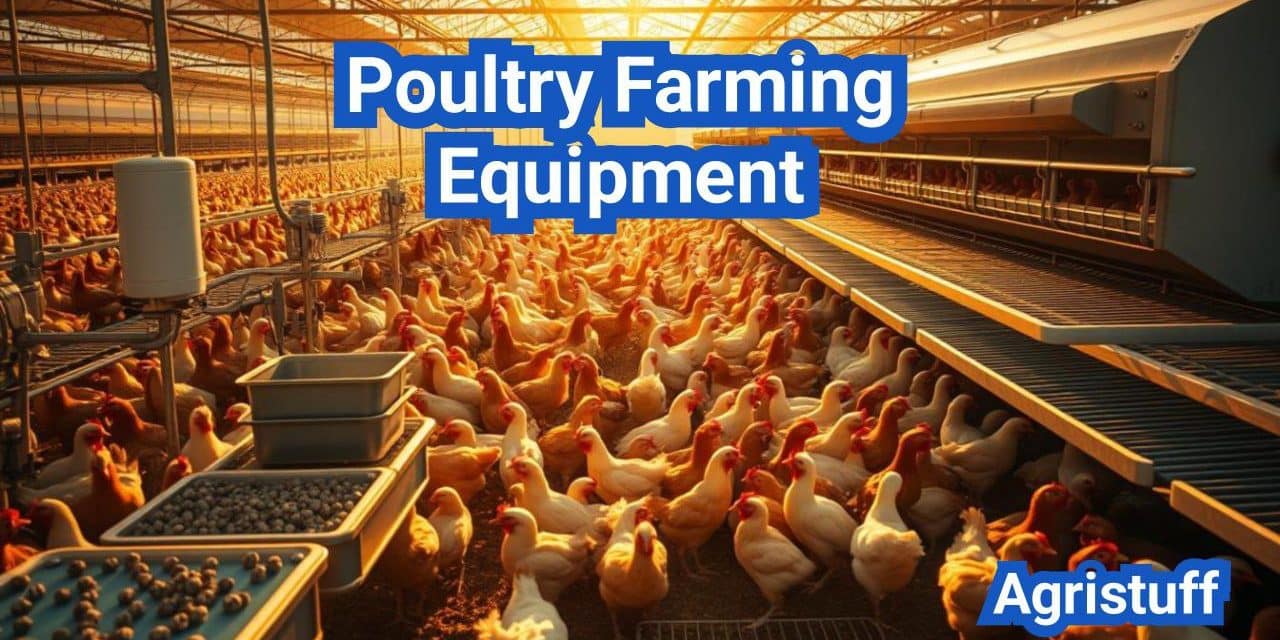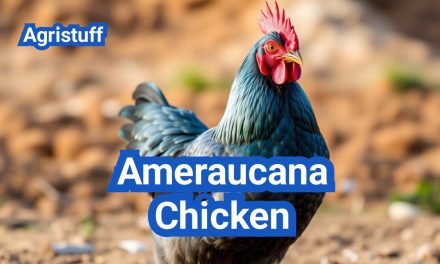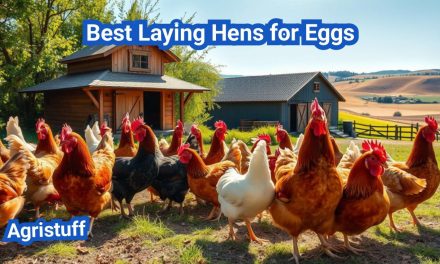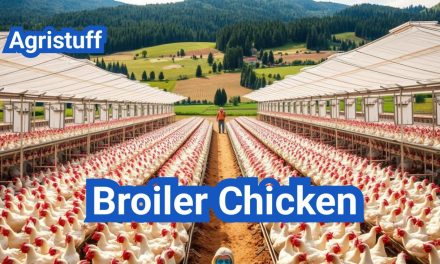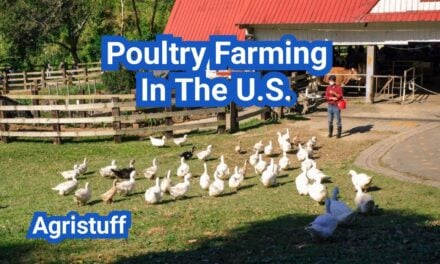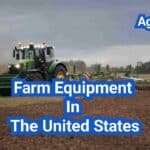Modern poultry farming requires more than just manual labor; it demands efficient and automated poultry farming equipment to ensure profitability.
The size of your farm will determine the amount and type of poultry farming tools you need. While small farms may manage with manual equipment, larger operations necessitate automated systems for feeding, ventilation, and egg collection.
Investing in the right poultry farming equipment list can significantly enhance efficiency, production, and animal welfare. Whether you’re raising broilers or layers, having the appropriate poultry farming equipment for broilers products is crucial.
Key Takeaways
- Automated equipment is essential for modern poultry farming.
- The right equipment enhances efficiency and production.
- Proper tools improve animal welfare.
- Equipment costs vary based on farm size and type.
- Investing in quality equipment is crucial for profitability.
The Fundamentals of Poultry Farming Success
To establish a thriving poultry farm, it’s essential to grasp the core principles of poultry farming. Success in this field depends on various factors, including the type of poultry operation, equipment quality, and farm layout.
Types of Poultry Operations and Their Requirements
Poultry farming encompasses various operations, each with its unique requirements. Broiler production focuses on raising chickens for meat, while layer production is centered on egg production. Understanding these differences is crucial for selecting the right equipment and management strategies.
For instance, broiler farms require equipment that supports rapid growth and health, such as specialized feeding systems and climate control. In contrast, layer farms need equipment that promotes egg production, like nesting boxes and egg collection systems.
Balancing Equipment Quality and Profitability
Investing in poultry farming equipment is a significant decision that affects both the quality of the operation and its profitability. High-quality equipment can improve efficiency and reduce labor costs, but it often comes with a higher upfront cost.
Farmers must balance the need for quality equipment with the need to maintain profitability. This involves considering factors like energy efficiency, durability, and the potential return on investment.
Planning Your Poultry Farm Layout
A well-planned farm layout is essential for efficient operations. The layout should facilitate easy movement of staff, equipment, and poultry, while also ensuring biosecurity and reducing stress on the birds.
Key considerations include the arrangement of housing units, feeding and watering systems, and waste management facilities. A thoughtful layout can help prevent disease outbreaks and improve overall farm productivity.
Essential Poultry Farming Equipment for Beginners

Poultry farming for beginners requires a solid understanding of the essential equipment needed to get started. As a novice farmer, it’s crucial to invest in the right tools to ensure the health and productivity of your flock.
Starter Equipment Package Recommendations
For those just starting out, a starter equipment package can be a cost-effective way to acquire the necessary tools. These packages typically include:
- Feeders and drinkers designed for young birds
- Brooders for maintaining optimal temperatures
- Basic climate control systems
When selecting a starter package, consider the size of your operation and the specific needs of your poultry. It’s also essential to research the quality and durability of the equipment.
Must-Have vs. Optional Tools
Understanding the difference between must-have and optional tools is vital for managing costs and ensuring efficiency. Must-have tools include:
- Feeders and drinkers
- Brooding equipment
- Ventilation systems
Optional tools might include automated feeding systems or advanced health monitoring equipment. As your farm grows, you can gradually add these optional tools to enhance productivity.
“Investing in quality equipment from the start can significantly impact the long-term success of your poultry farm.”
Scaling Equipment as Your Farm Grows
As your poultry farm expands, it’s essential to scale your equipment accordingly. This might involve:
- Upgrading to automated feeding and watering systems
- Expanding your brooding capacity
- Implementing more sophisticated climate control systems
Scaling your equipment should be done thoughtfully, considering both your current needs and future growth plans. It’s also crucial to maintain a balance between equipment quality and profitability.
Poultry Housing Systems and Infrastructure
The design and infrastructure of poultry housing play a significant role in the health and productivity of the flock. A well-designed housing system can improve bird welfare, reduce mortality rates, and increase overall farm profitability.
Traditional vs. Modern Housing Designs
Traditional poultry housing designs often feature open-sided or curtain-sided houses that rely on natural ventilation. While these designs can be cost-effective, they may not provide optimal conditions for bird health and productivity. Modern housing designs, on the other hand, often incorporate advanced ventilation systems, climate control, and automated feeding and watering systems.
Modern designs offer several advantages, including:
- Improved climate control: Allowing for optimal temperature and humidity levels.
- Enhanced biosecurity: Reducing the risk of disease transmission.
- Increased efficiency: Through automation and optimized resource allocation.
Battery Cage Systems and Automated Houses
Battery cage systems are a popular choice for layer production, offering a high-density housing solution that can improve egg production efficiency. Automated houses take this concept further by incorporating advanced automation and monitoring systems.
The benefits of battery cage systems and automated houses include:
- Improved egg production: Through controlled environments and optimized nutrition.
- Reduced labor costs: Automation minimizes manual labor requirements.
- Enhanced bird health: Through controlled environments and reduced disease transmission risk.
Free-Range Housing Solutions
Free-range housing systems offer an alternative to traditional cage-based systems, providing birds with access to outdoor areas and more space to move. While free-range systems can be more challenging to manage, they offer benefits in terms of bird welfare and product differentiation.
Key considerations for free-range housing include:
- Outdoor access: Ensuring that birds have safe and easy access to outdoor areas.
- Predator protection: Implementing measures to protect birds from predators.
- Flock management: Monitoring and managing flock behavior to prevent stress and disease.
Brooding and Incubation Tools

Effective brooding and incubation are fundamental to the health and productivity of poultry. These initial stages of poultry farming set the tone for the entire operation, making the right equipment crucial for success.
Incubator Types and Selection Criteria
Incubators are a critical component of poultry farming, providing a controlled environment for eggs to hatch. There are various types of incubators available, including still-air incubators and forced-air incubators, each with its own set of advantages. When selecting an incubator, factors such as capacity, temperature control, and humidity management should be considered to ensure optimal hatching conditions.
Brooder Designs for Different Flock Sizes
Brooders are essential for rearing young chicks, providing them with the necessary warmth and protection. The design of a brooder can vary significantly based on the size of the flock. For smaller flocks, simple brooder setups may suffice, while larger operations may require more complex and spacious brooder designs. Proper ventilation and temperature control are key considerations in brooder design to promote healthy chick development.
Temperature Control Systems
Temperature control is vital in both incubation and brooding stages. In incubators, precise temperature control ensures that eggs develop correctly, while in brooders, it helps chicks grow healthily. Modern poultry farms often employ advanced temperature control systems that can be programmed to maintain optimal temperatures at different stages of poultry development. These systems can significantly improve the efficiency and productivity of poultry farming operations.
Feeding Systems for Maximum Productivity
The right feeding system can significantly impact the overall productivity of a poultry farm. Efficient feeding systems ensure that birds receive the necessary nutrients for optimal growth and health, directly influencing farm profitability.
Manual vs. Automatic Feeding Equipment
Poultry farmers can choose between manual and automatic feeding equipment based on their farm size, labor availability, and budget. Manual feeding systems are more labor-intensive and suitable for smaller operations, while automatic feeding systems offer efficiency and reduced labor costs, making them ideal for larger farms.
Key Considerations for Choosing Feeding Equipment:
- Reliability and durability
- Ease of use and maintenance
- Cost-effectiveness
- Adaptability to different feed types
Automatic Broiler Feeding Systems
Automatic broiler feeding systems are designed to optimize feed distribution, reducing waste and ensuring that birds have access to feed at all times. These systems are particularly beneficial for broiler farms, where efficient feeding is crucial for rapid growth rates.
“The implementation of automatic feeding systems has revolutionized broiler production, enabling farmers to manage larger flocks with less labor.” –
Poultry Industry Expert
Some key features of automatic broiler feeding systems include:
| Feature | Description | Benefit |
|---|---|---|
| Programmable Feeding Schedules | Allows for customized feeding times and amounts | Optimizes feed consumption and reduces waste |
| Feed Level Monitoring | Automatically adjusts feed levels to prevent overfeeding or underfeeding | Ensures consistent bird growth and health |
Feed Storage and Processing Solutions
Effective feed storage and processing are critical components of a poultry farm’s feeding system. Proper storage prevents feed spoilage, while efficient processing ensures that feed is of high quality.
Best Practices for Feed Storage:
- Use dry, well-ventilated storage areas
- Keep storage containers clean and pest-free
- Implement a first-in, first-out inventory system
By investing in the right feeding systems, poultry farmers can enhance productivity, reduce operational costs, and improve the overall health and well-being of their flocks.
Watering Systems and Management

A well-designed watering system is essential for profitable poultry farming. Watering systems are critical for maintaining the health and productivity of poultry flocks.
Nipple Drinkers vs. Bell Drinkers | Poultry Farming Equipment
Poultry farmers often debate between nipple drinkers and bell drinkers for their watering needs. Nipple drinkers are known for their efficiency and reduced water waste, making them a popular choice for modern poultry farms. On the other hand, bell drinkers are simpler in design and can be more cost-effective, although they may lead to more water spillage.
The choice between nipple and bell drinkers depends on the specific needs of the farm, including the age and type of poultry being raised.
Water Storage and Filtration Equipment
Effective water storage and filtration are crucial components of a reliable watering system. Poultry farmers need to ensure that their water supply is clean and free from contaminants.
- Water storage tanks should be designed to prevent algae growth and contamination.
- Filtration systems, such as sediment filters and UV purifiers, can help maintain water quality.
Water Temperature Regulation Tools | Poultry Farming Equipment
Regulating water temperature is vital for the health of poultry. Water that is too cold or too hot can stress the birds, impacting their productivity.
Water heaters and insulation systems can be used to maintain optimal water temperatures, especially in colder climates.
By investing in a comprehensive watering system that includes proper storage, filtration, and temperature regulation, poultry farmers can significantly improve the health and productivity of their flocks.
Ventilation and Climate Control Equipment
Maintaining optimal ventilation and climate conditions is essential for the success of poultry farming operations. Proper ventilation helps remove moisture, reduce ammonia levels, and regulate temperature, all of which are critical for the health and productivity of the flock.
Natural vs. Mechanical Ventilation Systems
Natural ventilation relies on wind and thermal buoyancy to circulate air through the poultry house. This method is cost-effective and can be suitable for certain climates and farm designs. However, it offers limited control over ventilation rates, which can be a significant drawback in extreme weather conditions.
Mechanical ventilation systems, on the other hand, provide a more controlled and reliable means of managing airflow. These systems use fans to exhaust air from the poultry house, creating a negative pressure that pulls fresh air in through inlets. Mechanical ventilation is particularly beneficial in larger or more intensive poultry operations where precise climate control is crucial.
Fans and Air Circulation Equipment
Fans play a vital role in mechanical ventilation systems, helping to circulate air and maintain a uniform temperature throughout the poultry house. Different types of fans, such as axial and centrifugal fans, are used depending on the specific requirements of the farm.
Effective air circulation is essential for preventing heat stress and ensuring that all areas of the poultry house receive adequate ventilation. Proper fan placement and operation are critical to achieving this goal.
Cooling and Heating Solutions | Poultry Farming Equipment
In addition to ventilation, cooling and heating solutions are necessary to maintain optimal temperatures within the poultry house. Cooling systems, such as evaporative cooling pads or fogging systems, help reduce temperatures during hot weather.
Heating systems, including brooders and space heaters, are used to maintain warmth during colder periods. The choice of heating system depends on factors such as the size of the operation, climate, and fuel availability.
By combining effective ventilation and climate control equipment, poultry farmers can create a healthy and productive environment for their flock. This not only improves bird welfare but also contributes to the overall efficiency and profitability of the farm.
Comprehensive Poultry Farming Equipment List and Prices

To successfully manage a poultry farm, it’s critical to have a comprehensive understanding of the equipment required and their associated costs. The scale of the operation, whether it’s a small-scale farm or a commercial operation, significantly influences the type and cost of the equipment needed.
Small-Scale Farm Equipment Costs | Poultry Farming Equipment
For small-scale poultry farms, the initial investment in equipment can be relatively low. Essential equipment includes feeders, drinkers, brooders, and basic housing infrastructure. The cost can range from $500 to $5,000, depending on the size of the flock and the level of automation.
Example of Small-Scale Farm Equipment Costs:
| Equipment | Cost Range |
|---|---|
| Feeders and Drinkers | $100 – $500 |
| Brooders | $200 – $1,000 |
| Housing Infrastructure | $200 – $3,500 |
Commercial Operation Investment Analysis | Poultry Farming Equipment
Commercial poultry farming operations require a significant investment in equipment, including automated feeding and watering systems, advanced ventilation systems, and sophisticated housing designs. The cost can range from $50,000 to $500,000 or more, depending on the scale and level of automation.
Key Considerations for Commercial Operations:
- Automation level
- Flock size
- Type of poultry being raised
- Advanced technology integration
Price Comparison: New vs. Used Equipment
Farmers have the option to purchase new or used equipment. New equipment comes with warranties and the latest technology, but at a higher cost. Used equipment can be more affordable but may require maintenance and lacks the latest features.
Comparison Table:
| Equipment Type | New Equipment Cost | Used Equipment Cost |
|---|---|---|
| Automated Feeding System | $5,000 – $10,000 | $2,000 – $6,000 |
| Ventilation System | $3,000 – $8,000 | $1,500 – $4,000 |
| Housing Infrastructure | $10,000 – $50,000 | $5,000 – $20,000 |
Specialized Equipment for Broiler Production

Specialized equipment plays a crucial role in broiler production, enhancing both the quality and quantity of the output. Broiler farming requires specific tools and infrastructure to ensure efficient operations and high-quality meat production.
Broiler-Specific Housing Equipment
Broiler-specific housing equipment is designed to provide optimal conditions for broiler chickens. This includes cage systems that are specifically designed for broiler farming, allowing for efficient use of space and easy management of the flock.
The cage systems for broilers are typically designed with features such as automatic feeding and watering systems, as well as integrated manure removal systems. These features help in reducing labor costs and improving the overall health and welfare of the birds.
Automated Broiler Houses | Poultry Farming Equipment
Automated broiler houses represent a significant advancement in broiler production technology. These houses are equipped with sophisticated climate control systems, automated feeding and watering systems, and advanced ventilation systems.
The automation in these houses not only improves the efficiency of the farm but also enhances the living conditions for the broilers, leading to healthier birds and higher productivity.
Broiler Processing Tools | Poultry Farming Equipment
Broiler processing tools are essential for the efficient and humane processing of broiler chickens. These tools include equipment for stunning, slaughtering, eviscerating, and packaging the birds.
Modern broiler processing facilities utilize advanced technology to ensure high standards of food safety and quality. This includes automated systems for evisceration and cleaning, as well as precise temperature control for optimal meat quality.
| Equipment Type | Description | Benefits |
|---|---|---|
| Broiler-Specific Cages | Designed for efficient broiler farming | Space-saving, easy flock management |
| Automated Broiler Houses | Advanced climate control and automation | Improved bird health, reduced labor |
| Broiler Processing Equipment | For humane and efficient processing | High-quality meat, food safety |
Layer Production and Egg Handling Equipment

Efficient layer production hinges on the right equipment, from layer cage systems to automated egg collection. The success of a layer operation depends significantly on the quality and functionality of the equipment used.
Layer Cage Systems and 4-Tier Configurations
Layer cage systems are designed to optimize egg production while ensuring the welfare of the hens. A popular configuration is the 4-tier layer cage system, which maximizes space usage.
- Increased egg production per square foot
- Improved hen welfare through better living conditions
- Efficient manure management systems
These systems are engineered to reduce labor costs and improve the overall efficiency of the farm.
Automated Egg Collection Systems
Automated egg collection systems are a crucial component of modern layer production. They reduce labor costs and minimize egg damage.
Key benefits include:
- Reduced labor requirements
- Minimized egg breakage
- Increased farm productivity
Egg Grading and Processing Equipment
Egg grading and processing equipment are essential for ensuring the quality of eggs reaching the market. This equipment sorts eggs by size, weight, and quality.
The use of advanced egg grading machines can significantly enhance the efficiency of the egg processing operation.
- Improved egg quality control
- Enhanced marketability of eggs
- Reduced manual labor in egg sorting
Poultry Health Management Tools

Poultry health management tools play a vital role in ensuring the well-being of your birds and the overall success of your farm. Effective health management is critical for preventing disease outbreaks, reducing mortality rates, and maintaining productivity.
Vaccination and Medication Equipment | Poultry Farming Equipment
Vaccination is a crucial aspect of poultry health management. Vaccination equipment such as automated vaccinators and spray vaccination systems help ensure that birds receive the necessary vaccinations efficiently. Medication equipment, including automated feeders and drinkers that can be used to administer medications, is also essential for maintaining flock health.
The use of proper vaccination and medication equipment can significantly reduce the risk of disease. For instance, automated vaccination systems can ensure that every bird is vaccinated, reducing the risk of human error.
Health Monitoring Systems | Poultry Farming Equipment
Health monitoring systems are vital for early detection of diseases and health issues in poultry. These systems can include temperature monitoring devices, humidity sensors, and other environmental monitoring tools. Advanced health monitoring systems can also involve the use of AI and IoT technologies to predict and prevent health issues.
Implementing a comprehensive health monitoring system allows farmers to respond quickly to any changes in the health status of their flock, thereby reducing the risk of disease outbreaks.
Biosecurity and Sanitation Tools | Poultry Farming Equipment
Biosecurity measures are critical for preventing the introduction and spread of diseases within a poultry farm. Biosecurity and sanitation tools include disinfection equipment, foot baths, and other sanitation supplies. These tools help maintain a clean environment for the birds, reducing the risk of disease.
Effective biosecurity practices involve regular cleaning and disinfection of the farm, controlling access to the farm, and ensuring that all equipment and personnel are properly sanitized.
| Health Management Tool | Description | Benefits |
|---|---|---|
| Vaccination Equipment | Automated systems for vaccinating poultry | Efficient vaccination, reduced human error |
| Health Monitoring Systems | Systems for monitoring temperature, humidity, and other health indicators | Early detection of health issues, improved response times |
| Biosecurity and Sanitation Tools | Equipment for disinfection, foot baths, and other sanitation measures | Reduced risk of disease, cleaner environment for birds |
Waste Management and Cleaning Equipment

The importance of proper waste management in poultry farming cannot be overstated. Effective waste management is crucial for maintaining a healthy environment, reducing disease risks, and improving overall farm productivity. It involves a range of equipment and systems designed to handle manure, clean the farm, and manage litter.
Manure Handling and Composting Systems | Poultry Farming Equipment
Manure handling is a critical component of waste management on poultry farms. Composting systems are used to convert manure into a valuable resource that can be used as fertilizer. This process not only reduces waste but also creates an additional revenue stream for farmers.
The composting process involves several steps, including collection, aeration, and monitoring of moisture and temperature levels. Modern composting systems often incorporate technology such as aeration equipment and moisture sensors to optimize the process.
Poultry Farm Cleaning Machines
Cleaning machines are essential for maintaining hygiene on poultry farms. These machines help remove waste and debris from the farm, reducing the risk of disease. Automated cleaning systems can significantly improve efficiency and reduce labor costs.
Types of cleaning machines used on poultry farms include scrapers, washers, and disinfection equipment. The choice of equipment depends on the farm’s size, type of poultry, and specific cleaning needs.
| Cleaning Machine Type | Description | Benefits |
|---|---|---|
| Scrapers | Used for removing manure and litter | Efficient waste removal, reduces labor |
| Washers | High-pressure washers for cleaning farm surfaces | Improves hygiene, reduces disease risk |
| Disinfection Equipment | Used for sanitizing farm equipment and surfaces | Enhances biosecurity, reduces pathogen load |
Raking Machines and Litter Management | Poultry Farming Equipment
Raking machines play a vital role in litter management by ensuring that the litter remains dry and free of clumps. This helps in maintaining a healthy environment for the poultry by reducing ammonia levels and preventing the growth of harmful pathogens.
Effective litter management involves regular raking, monitoring moisture levels, and ensuring adequate ventilation. Raking machines are designed to work efficiently in various litter types and conditions, making them an indispensable tool for poultry farmers.
Lighting Systems for Enhanced Productivity

The right lighting can make a substantial difference in poultry farming, impacting both the welfare of the birds and the farm’s profitability. Lighting systems play a critical role in creating an optimal environment for poultry, influencing their growth, health, and productivity.
LED vs. Traditional Lighting Options | Poultry Farming Equipment
When it comes to lighting systems for poultry farming, farmers have a choice between LED lighting and traditional lighting options. LED lighting has gained popularity due to its energy efficiency and longevity. Unlike traditional lighting, which includes incandescent and fluorescent lights, LEDs emit very little heat, reducing the risk of overheating and creating a more comfortable environment for the birds.
According to a study, “LED lighting in poultry houses can reduce energy consumption by up to 75% compared to traditional lighting methods.”
“The use of LED lighting in poultry farming not only reduces energy costs but also improves the overall welfare of the birds by providing a more stable and comfortable environment.”
| Lighting Type | Energy Efficiency | Lifespan | Heat Emission |
|---|---|---|---|
| LED Lighting | High | Long (up to 50,000 hours) | Low |
| Traditional Lighting | Low to Medium | Short to Medium (1,000 – 10,000 hours) | High |
Light Controllers and Programmable Systems | Poultry Farming Equipment
Light controllers and programmable systems offer poultry farmers the ability to tailor lighting conditions to the specific needs of their flocks. These systems can simulate natural daylight patterns, adjust intensity, and even change color to influence bird behavior and physiology.
Programmable lighting systems can be particularly beneficial for farms with different types of poultry, as they allow for customized lighting programs. For instance, layers may require different lighting schedules than broilers.
Lighting Programs for Different Poultry Types
Different poultry types have unique lighting requirements. For example, broiler chickens benefit from continuous lighting for the first few days of life to encourage feeding, while layers require specific lighting schedules to stimulate egg production.
- Broilers: Continuous lighting initially, then reduced to 16-18 hours of light per day.
- Layers: 14-16 hours of light per day to stimulate egg production.
- Breeder Flocks: Specific lighting programs to control maturity and egg production.
By implementing the right lighting system and program, poultry farmers can enhance the productivity and welfare of their flocks, ultimately improving their farm’s profitability.
Specialized Equipment for Alternative Poultry Farming
Specialized equipment plays a vital role in alternative poultry farming, catering to the unique needs of different poultry types. As farmers diversify their operations to include various bird species, understanding the specific equipment requirements becomes crucial for success.
Quail Farming Equipment Essentials | Poultry Farming Equipment
Quail farming, known for its low space requirements and fast growth rate, necessitates specific equipment. Quail cages are designed to be more compact, often with multiple tiers to maximize space. Feeders and waterers for quail are also specialized to prevent waste and ensure easy access.
The use of automated systems for feeding and egg collection is becoming increasingly popular in quail farming. These systems not only reduce labor costs but also improve the overall efficiency of the operation.
Turkey Production Specialized Tools
Turkey production requires equipment that can accommodate the birds’ larger size and specific growth needs. Turkey brooders are designed to provide a safe and healthy environment for young poults, with adequate heating and ventilation.
As turkeys grow, they require more space and specialized feeding systems. Grow-out facilities often utilize automated feeding and watering systems to manage the large numbers of birds efficiently.
| Equipment | Description | Benefits |
|---|---|---|
| Turkey Brooders | Heated enclosures for young turkeys | Improved survival rates, healthy growth |
| Automated Feeding Systems | Mechanized feed distribution | Reduced labor, consistent feeding |
Duck and Geese Farming Equipment
Duck and geese farming involves unique challenges, including the need for water management systems. Swimming pools or water areas are essential for the welfare of these birds, requiring specialized equipment for water supply and drainage.
Additionally, housing for ducks and geese must be designed to protect them from predators and provide adequate ventilation. Fencing and enclosures are also critical to manage the movement of these birds within the farm.
By understanding and investing in the right specialized equipment, farmers can improve the efficiency and profitability of their alternative poultry farming operations.
Poultry Farm Management Software and Automation
Automation and software are transforming the poultry farming industry by enhancing operational efficiency. The use of poultry farm management software has become a critical component in modern farming, enabling farmers to streamline their operations, reduce labor costs, and improve productivity.
Production Monitoring Systems | Poultry Farming Equipment
Production monitoring systems are a vital part of poultry farm management. These systems allow farmers to track various aspects of their operation in real-time, including growth rates, feed consumption, and health issues. By having access to this data, farmers can make informed decisions to optimize their production processes.
Inventory and Feed Management Software | Poultry Farming Equipment
Effective inventory and feed management are crucial for maintaining the health and productivity of poultry. Specialized software helps farmers manage their feed supplies, monitor inventory levels, and automate ordering processes. This not only reduces waste but also ensures that the flock receives the necessary nutrients for optimal growth.
Moreover, inventory management software can be integrated with production monitoring systems to provide a comprehensive view of the farm’s operations. This integration enables farmers to correlate feed consumption with growth rates and adjust their strategies accordingly.
Integrated Farm Control Systems | Poultry Farming Equipment
Integrated farm control systems represent the pinnacle of automation in poultry farming. These systems integrate various aspects of farm management, including climate control, feeding systems, and health monitoring, into a single, cohesive platform. By centralizing control, farmers can more easily manage their operations and respond to any issues that may arise.
Furthermore, integrated systems can provide valuable insights through data analytics, helping farmers to identify trends and areas for improvement. This can lead to enhanced efficiency, reduced costs, and improved overall performance.
Sustainable and Efficient Poultry Farming Tools
Efficient poultry farming tools are crucial for modern farmers looking to minimize their environmental impact while maximizing productivity. As the global demand for poultry products continues to rise, farmers are under increasing pressure to adopt sustainable practices that reduce their ecological footprint.
Energy-Efficient Equipment Options
One of the key areas where poultry farmers can improve sustainability is through the use of energy-efficient equipment. This includes LED lighting, which not only consumes less energy but also provides a more consistent light source for the poultry. Additionally, modern ventilation systems are designed to optimize airflow while minimizing energy consumption.
Another important aspect is the use of energy-efficient heating and cooling systems. These systems help maintain optimal temperatures within the poultry houses, reducing the need for excessive heating or cooling and thereby lowering energy costs.
Water Conservation Systems | Poultry Farming Equipment
Water conservation is another critical aspect of sustainable poultry farming. Nipple drinkers are a popular choice among farmers as they reduce water wastage significantly compared to traditional watering systems. Moreover, implementing water recycling systems can further reduce water consumption.
Farmers can also benefit from installing rainwater harvesting systems to supplement their water needs. This not only reduces reliance on groundwater but also helps in managing stormwater runoff.
Solar-Powered Farm Solutions | Poultry Farming Equipment
The integration of solar power into poultry farming operations is gaining popularity. Solar-powered ventilation systems and egg incubators are examples of how renewable energy can be harnessed to reduce dependence on fossil fuels. Solar panels can be installed to generate electricity, which can power various farm operations, from lighting to feeding systems.
Furthermore, solar-powered water heaters can provide a consistent supply of warm water for the poultry, enhancing their comfort and health.
Equipping Your Farm for Long-Term Success
Equipping your farm with the right poultry farming equipment is crucial for achieving long-term success in the poultry industry. By investing in essential tools and infrastructure, you can ensure profitable farming operations and maintain a competitive edge in the market.
Effective poultry farm management involves selecting the right equipment, such as advanced feeding systems, climate control solutions, and health management tools. These investments not only enhance productivity but also contribute to the overall well-being of your flock.
By leveraging modern poultry farming equipment and adopting best practices in farm management, you can optimize your operations for maximum efficiency and profitability. This approach will help you navigate the challenges of the poultry industry and achieve sustained growth and success.
FAQ
What are the essential equipment for starting a poultry farm?
The essential equipment for starting a poultry farm includes a starter package with incubators, brooders, feeding and watering systems, and ventilation equipment.
What is the difference between battery cage systems and free-range housing?
Battery cage systems are designed for efficient egg production, while free-range housing provides more space and natural light for the birds, promoting animal welfare.
How do I choose the right incubator for my poultry farm?
When choosing an incubator, consider factors such as capacity, temperature control, humidity management, and egg turning mechanisms to ensure optimal hatching rates.
What are the benefits of automated feeding systems in poultry farming?
Automated feeding systems improve efficiency, reduce labor costs, and ensure consistent feeding schedules, leading to better bird growth and productivity.
How can I ensure proper ventilation in my poultry house?
Proper ventilation can be achieved through a combination of natural and mechanical ventilation systems, including fans, vents, and windows, to maintain a healthy environment.
What are the advantages of using LED lighting in poultry houses?
LED lighting offers energy efficiency, longer lifespan, and improved light quality, which can enhance bird growth, productivity, and welfare.
How can I manage waste effectively in my poultry farm?
Effective waste management involves implementing manure handling and composting systems, raking machines, and regular cleaning schedules to maintain a clean and healthy environment.
What are the key considerations for selecting poultry farm management software?
When selecting poultry farm management software, consider features such as production monitoring, inventory management, feed management, and data analysis to optimize farm operations.
How can I reduce energy costs in my poultry farm?
Energy costs can be reduced by implementing energy-efficient equipment, such as LED lighting, solar-powered systems, and insulation, to minimize energy consumption.
What are the benefits of using poultry farm automation?
Poultry farm automation improves efficiency, reduces labor costs, and enhances bird welfare by ensuring consistent and precise control over farm operations.
How can I ensure biosecurity in my poultry farm?
Biosecurity measures include implementing sanitation protocols, controlling access to the farm, and using health monitoring systems to prevent disease outbreaks.
What are the specialized equipment required for broiler production?
Broiler production requires specialized equipment such as broiler-specific housing, automated broiler houses, and broiler processing tools to ensure efficient and humane production.
How can I optimize egg production in my layer farm?
Optimizing egg production involves using layer cage systems, automated egg collection systems, and egg grading and processing equipment to ensure high-quality eggs and efficient production.
Conclusion Of: Poultry Farming Equipment
Choosing the right poultry farming equipment is fundamental to running a successful and profitable poultry farm. High-quality poultry farming equipment can dramatically enhance productivity, improve bird health, and streamline management processes. In the competitive poultry farming industry in the USA, understanding the essential tools required is crucial for long-term success. Learn more about poultry farming best practices from the USDA’s Poultry Production Guidelines.
Why Poultry Farming Equipment Matters
Effective poultry farming equipment directly contributes to the efficiency and productivity of your poultry farm. Investing in reliable poultry farming equipment reduces labor costs, minimizes disease risks, and ensures optimal environmental conditions for your poultry. For insights on equipment impact, refer to the University of Georgia Extension’s Poultry Resources.
Feeders | Poultry Farming Equipment
Feeders are critical poultry farming equipment, as they ensure that birds have constant access to feed. Automated feeders or gravity feeders are ideal as they minimize waste, maintain cleanliness, and consistently provide feed, promoting optimal bird health. Explore advanced feeder designs from Big Dutchman’s Feeding Systems.
Watering Systems | Poultry Farming Equipment
Reliable watering systems are essential poultry farming equipment. Automatic waterers or nipple drinkers help maintain hygiene, ensure continuous water supply, reduce water wastage, and significantly boost poultry health and productivity. Discover efficient solutions at Roxell’s Watering Systems.
Poultry Housing | Poultry Farming Equipment
Proper housing structures are crucial poultry farming equipment. Poultry houses must be designed for adequate space, ventilation, and protection from harsh weather and predators, ensuring your birds’ comfort and productivity. For turnkey housing solutions, see FACCO’s Poultry House Designs.
Lighting Equipment | Poultry Farming Equipment
Lighting equipment is vital poultry farming equipment, particularly in egg-laying farms. Adequate and controlled lighting enhances poultry productivity, promotes growth, and encourages consistent laying patterns. Research lighting strategies via the Penn State Poultry Science Department.
Nesting Boxes | Poultry Farming Equipment
Nesting boxes constitute essential poultry farming equipment, crucial for egg production farms. Appropriately sized and comfortable nesting boxes encourage egg-laying, minimize egg breakage, and facilitate efficient egg collection. Learn about optimized designs from TEXHA’s Egg Handling Systems.
Brooding Equipment | Poultry Farming Equipment
Brooders are necessary poultry farming equipment for rearing chicks. Quality brooders provide consistent warmth and protection during early developmental stages, ensuring chick survival and healthy growth. For brooder recommendations, consult the Iowa State University Poultry Team.
Incubation Equipment | Poultry Farming Equipment
Incubators are indispensable poultry farming equipment for hatcheries and breeding farms. Effective incubation equipment ensures stable temperature and humidity conditions, significantly improving hatch rates and chick health. Explore incubation technology at USPOULTRY’s Hatchery Resources.
Egg Collection and Handling Equipment
Proper egg collection and handling equipment is essential poultry farming equipment. Items like egg trays, grading and washing equipment, and storage systems maintain egg quality and enhance operational efficiency. See industry standards from the FDA’s Egg Safety Guidelines.
Meat Processing Equipment | Poultry Farming Equipment
For poultry farms focused on meat production, meat processing equipment is crucial poultry farming equipment. Pluckers, scalders, processing tables, and packaging tools streamline poultry processing operations, ensuring high-quality products. Review equipment options at Hotraco Agri’s Automation Solutions.
Ventilation and Climate Control | Poultry Farming Equipment
Efficient ventilation systems are necessary poultry farming equipment. Proper ventilation maintains air quality, regulates temperatures, and reduces humidity levels, ensuring optimal poultry health and productivity. For ventilation best practices, visit the Michigan State University Poultry Extension.
Heating and Cooling Solutions | Poultry Farming Equipment
Proper heating and cooling equipment is essential poultry farming equipment for maintaining an ideal poultry environment. Controlling temperatures effectively reduces stress, promotes growth, and optimizes poultry productivity. Learn more from the National Chicken Council’s Welfare Guidelines.
Security and Fencing | Poultry Farming Equipment
Security and fencing solutions are vital poultry farming equipment. Robust fencing protects poultry from predators, prevents escapes, and ensures your investment’s safety and profitability. Explore fencing options via the University of Arkansas Poultry Science.
Cleaning and Sanitation Equipment | Poultry Farming Equipment
Sanitation tools are essential poultry farming equipment, critical for maintaining farm hygiene. Pressure washers, disinfectants, and cleaning equipment effectively prevent disease outbreaks and keep poultry healthy. Refer to biosecurity protocols from the CDC’s Poultry Farming Guidelines.
Monitoring and Management Tools | Poultry Farming Equipment
Monitoring equipment like thermometers, humidity sensors, and surveillance cameras are essential poultry farming equipment. These tools provide real-time data, allowing for swift interventions, preventing losses, and maintaining ideal farm conditions. Discover smart farming tools at Kangfa’s Intelligent Systems.
Maintenance and Repair Equipment | Poultry Farming Equipment
Basic maintenance and repair tools are essential poultry farming equipment. Having a well-stocked toolkit enables regular equipment maintenance, reduces downtime, and ensures continuous operational efficiency. For maintenance tips, see Reliable Poultry’s Service Department.
Record-Keeping Systems | Poultry Farming Equipment
Accurate record-keeping systems are critical poultry farming equipment. Management software, logbooks, and inventory tracking help monitor productivity, manage costs, and enhance decision-making processes. Learn about digital tools from the Poultry Producer’s Management Resources.
Final Thought
Investing in the right poultry farming equipment is vital for profitable and sustainable poultry operations. Proper tools ensure efficient management, promote poultry health, and significantly boost farm productivity, making poultry farming a rewarding venture. For comprehensive guidance, consult the American Pastured Poultry Producers Association.

